页面已更新 :
Jan 2025
预计家用无创呼吸机市场在2026年至2034年间将以6.4%的复合年增长率增长。市场环境持续变化,为利益相关者带来新的机遇。整体市场格局呈现稳定发展态势,并具有长期增长潜力。
本报告按产品类型(电动、气动、电控气动)进行细分。此外,报告还根据应用人群(< 30岁、30~60岁、> 60岁)进行分析。全球分析进一步细分至区域和主要国家。报告以美元为单位提供上述分析和细分市场的价值。
报告目的
由The Insight Partners发布的《家用无创呼吸机市场报告》旨在描述当前市场格局和未来增长趋势、主要驱动因素、挑战和机遇。
这将为各类商业利益相关者提供洞察,例如:- 技术提供商/制造商:了解不断变化的市场动态和潜在的增长机会,从而做出明智的战略决策。
- 投资者:对市场增长率、市场财务预测以及整个价值链中存在的机遇进行全面的趋势分析。
- 监管机构:规范市场政策和监管市场活动,旨在最大限度地减少滥用行为,维护投资者信任和信心,并维护市场的完整性和稳定性。
家用无创呼吸机市场细分产品类型
- 电动
- 气动
- 电控气动
应用
- <30岁
- 30~60岁
- 60岁
自定义此报告以满足您的要求
您将免费获得任何报告的定制,包括本报告的部分内容,或国家级分析、Excel 数据包,以及为初创企业和大学提供超值优惠和折扣
家用无创呼吸机市场: 战略洞察
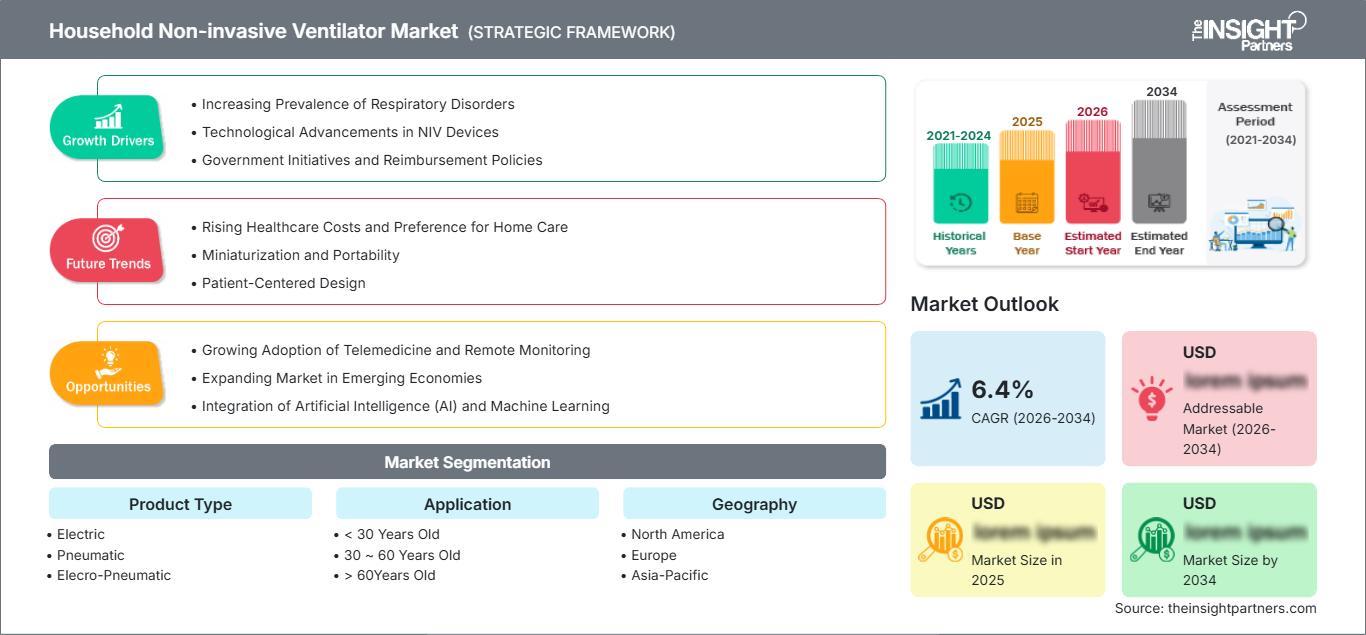
-
获取本报告的主要市场趋势。这个免费样本将包括数据分析,从市场趋势到估计和预测。
家用无创呼吸机市场增长驱动因素
- 呼吸系统疾病患病率上升:由于人口老龄化加剧、环境恶化和生活方式改变,慢性阻塞性肺病 (COPD)、阻塞性睡眠呼吸暂停 (OSA) 和神经肌肉疾病等呼吸系统疾病的发病率不断上升。慢性病患者对无创呼吸机 (NIV) 设备的需求不断增长,源于在家中长期接受呼吸支持的患者管理需求日益增加。
- 无创呼吸机 (NIV) 设备的技术进步:设计上的进步使无创呼吸机体积更小、效率更高、更易于使用,从而得以广泛应用于家庭环境。移动性、便携性、易用性、静音运行和舒适性等优势的提升,增强了无创呼吸机 (NIV) 设备的吸引力。通过移动应用程序进行远程监控,进一步提高了患者的自主性和管理的便捷性,使无创呼吸机 (NIV) 成为一种更实用的选择。
- 政府举措和报销政策:一些国家为家庭护理设备(包括无创通气设备)提供补贴;许多地区的其他报销政策也得到改善,使更多患者能够获得价格更实惠、更易负担的无创通气设备。这些政策鼓励医疗服务提供者和患者转向居家呼吸机解决方案。
家用无创通气机市场未来趋势
- 医疗成本上升和居家护理偏好:随着医疗系统负担日益加重,尤其是在发展中经济体,居家护理面临着巨大的压力,旨在减少住院和住院治疗费用。对于需要长期呼吸支持但希望在家中而非医院环境中管理病情的患者而言,无创通气设备是一种经济的选择。
- 小型化和便携性:小型化的趋势使无创通气设备不仅更加便携、隐蔽,而且使用起来也更加舒适。如今,越来越多的患者倾向于选择体积小、重量轻、便于携带的家用设备。大多数患者都被这种更便捷、更无创的长期使用方式所吸引。
- 以患者为中心的设计:亟需开发出能够让患者使用起来更轻松、更舒适的无创通气(NIV)设备。改进的面罩设计、降噪技术和其他符合人体工程学的功能,正在显著提升用户的整体体验。各公司致力于让其NIV设备更加人性化、易于学习,从而提高患者的依从性。
家用无创通气市场机遇
- 远程医疗和远程监测的日益普及:因此,远程医疗正成为一种快速的医疗保健管理模式,尤其适用于慢性病管理。
家用无创呼吸机市场
The Insight Partners 的分析师对预测期内影响家用无创呼吸机市场的区域趋势和因素进行了详尽的阐述。本节还讨论了北美、欧洲、亚太、中东和非洲以及南美和中美洲等地区的心脏节律疾病管理市场细分和地域分布。
家用无创呼吸机市场报告范围
| 报告属性 | 细节 |
|---|---|
| 市场规模 2025 | US$ XX Million |
| 市场规模 2034 | US$ XX Million |
| 全球复合年增长率 (2026 - 2034) | 6.4% |
| 历史数据 | 2021-2024 |
| 预测期 | 2026-2034 |
| 涵盖的领域 |
By 产品类型
|
| 覆盖地区和国家 |
北美
|
| 市场领导者和主要公司简介 |
|
家用无创呼吸机市场参与者密度:了解其对业务动态的影响
家用无创呼吸机市场正快速增长,这主要得益于终端用户需求的不断增长,而终端用户需求的增长又源于消费者偏好的转变、技术的进步以及对产品益处的认知度提高。随着需求的增长,企业正在拓展产品线、不断创新以满足消费者需求,并把握新兴趋势,这些都进一步推动了市场增长。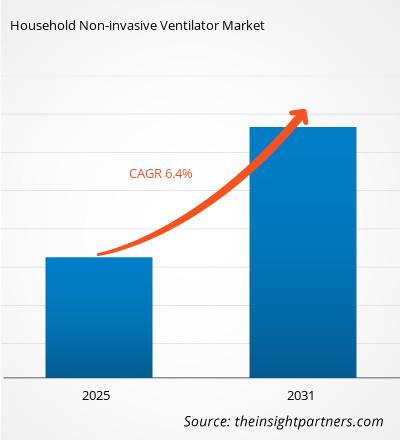
- 获取 家用无创呼吸机市场 主要参与者概述
主要卖点
- 全面覆盖:本报告全面分析了家用无创呼吸机市场的产品、服务、类型和最终用户,提供了一个完整的市场概览。
- 专家分析:本报告基于行业专家和分析师的深入理解而编写。
- 最新信息:本报告涵盖了最新的信息和数据趋势,确保其与业务的相关性。
- 定制选项:本报告可根据客户的具体需求进行定制,并能恰当地契合业务战略。
因此,这份关于家用无创呼吸机市场的研究报告可以帮助您深入了解和理解行业现状和增长前景。尽管可能存在一些合理的担忧,但本报告的总体优势往往大于劣势。
- 历史分析(2 年)、基准年、预测(7 年)及复合年增长率
- PEST和SWOT分析
- 市场规模、价值/数量 - 全球、区域、国家
- 行业和竞争格局
- Excel 数据集
近期报告
客户评价
购买理由
- 明智的决策
- 了解市场动态
- 竞争分析
- 客户洞察
- 市场预测
- 风险规避
- 战略规划
- 投资论证
- 识别新兴市场
- 优化营销策略
- 提升运营效率
- 顺应监管趋势
我们的客户












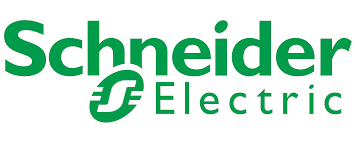

















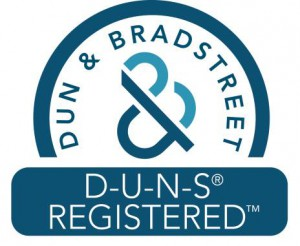
87-673-9708
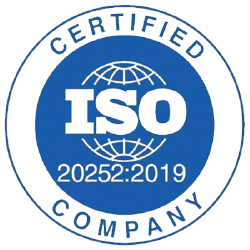
ISO 9001:2015





 获取免费样品 - 家用无创呼吸机市场
获取免费样品 - 家用无创呼吸机市场